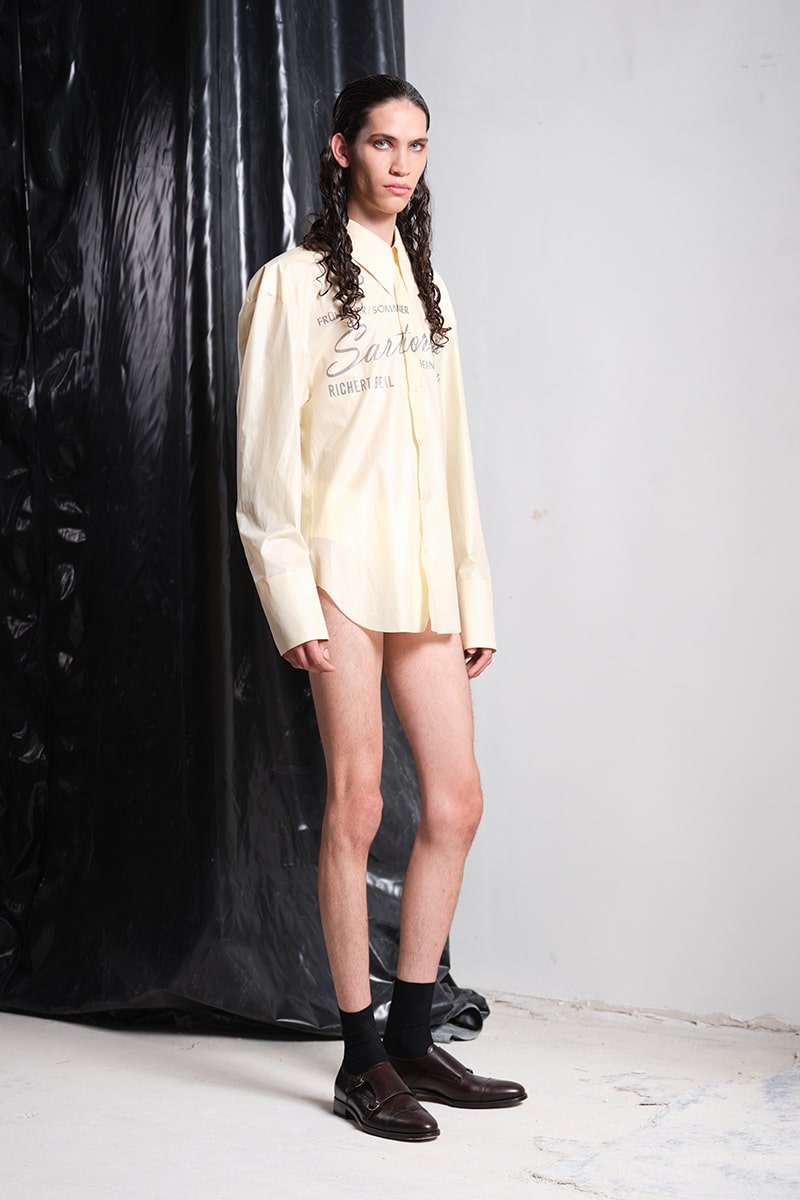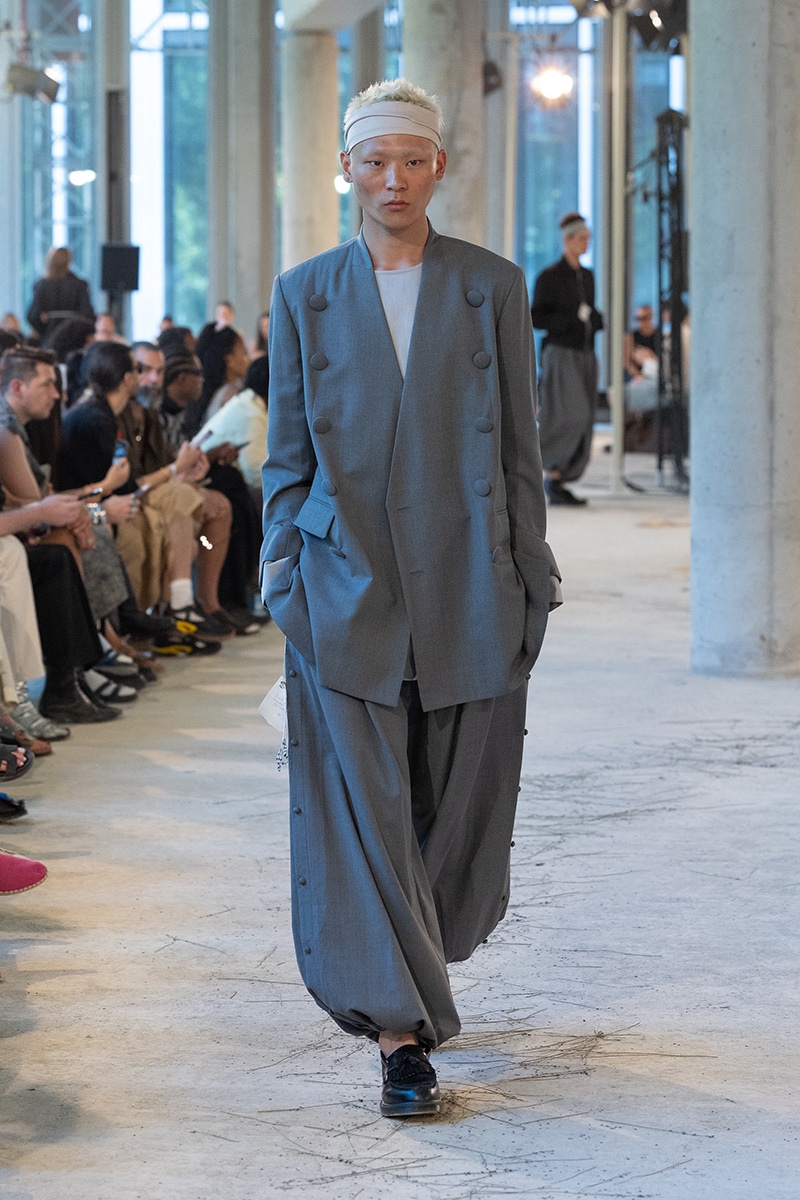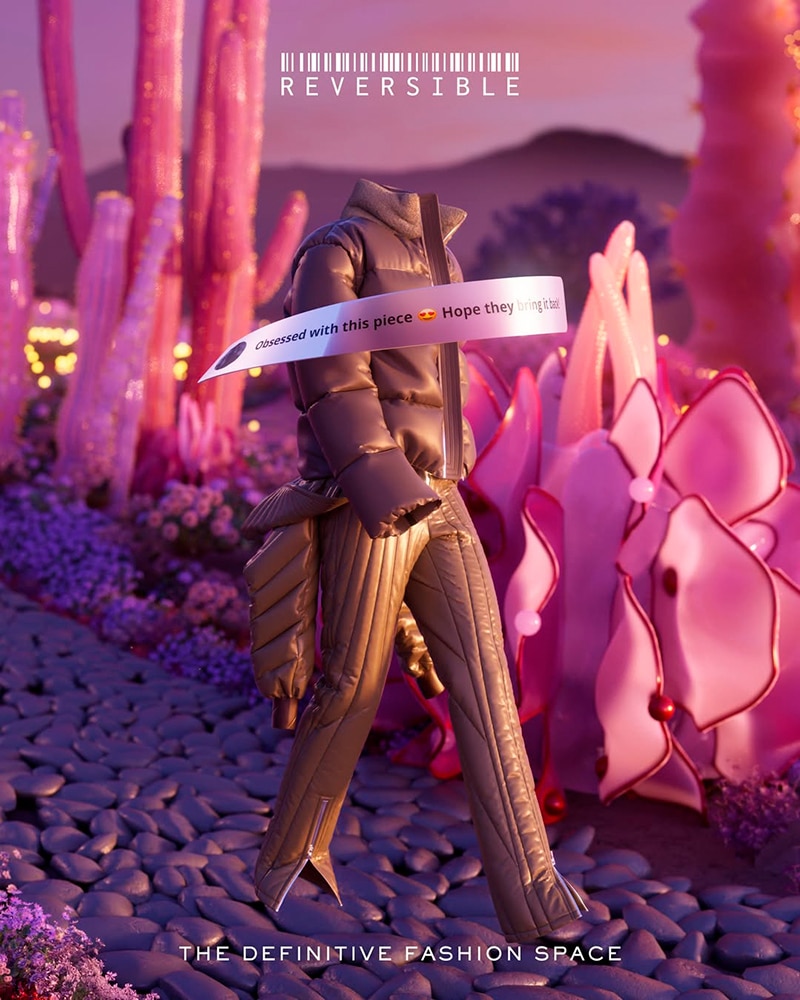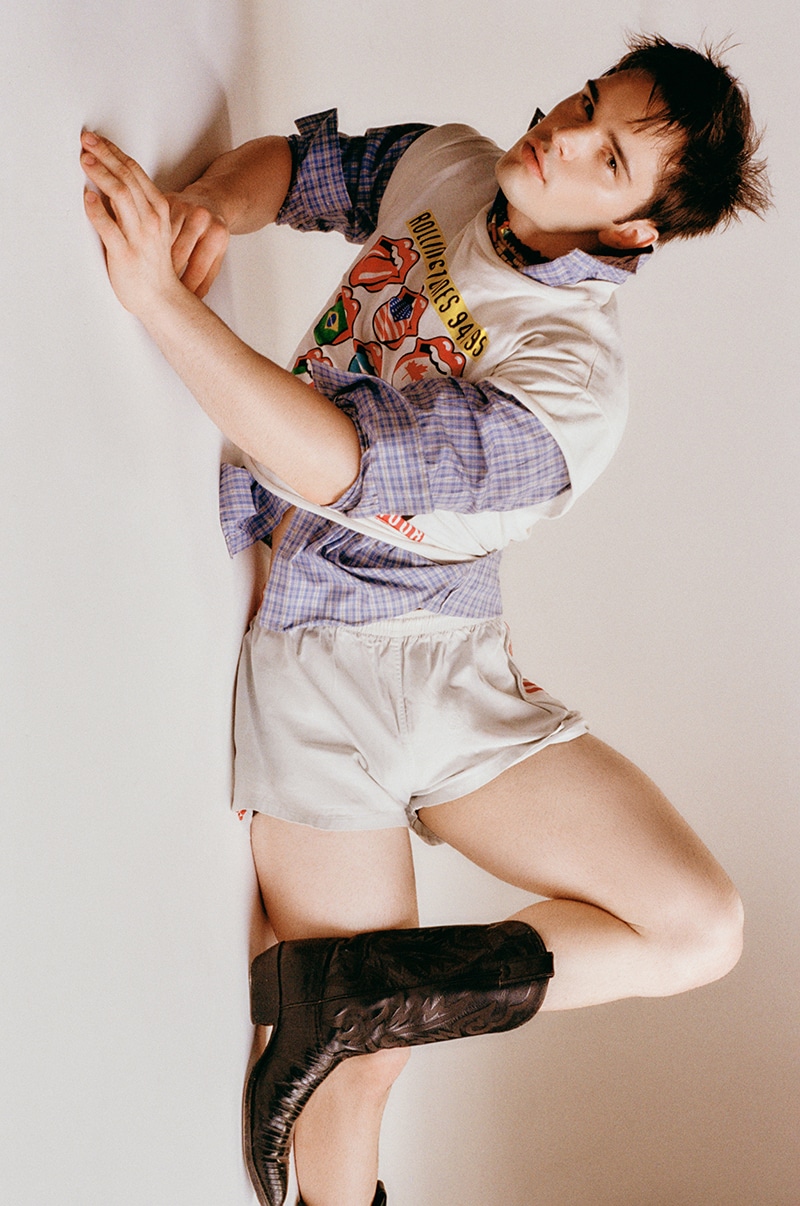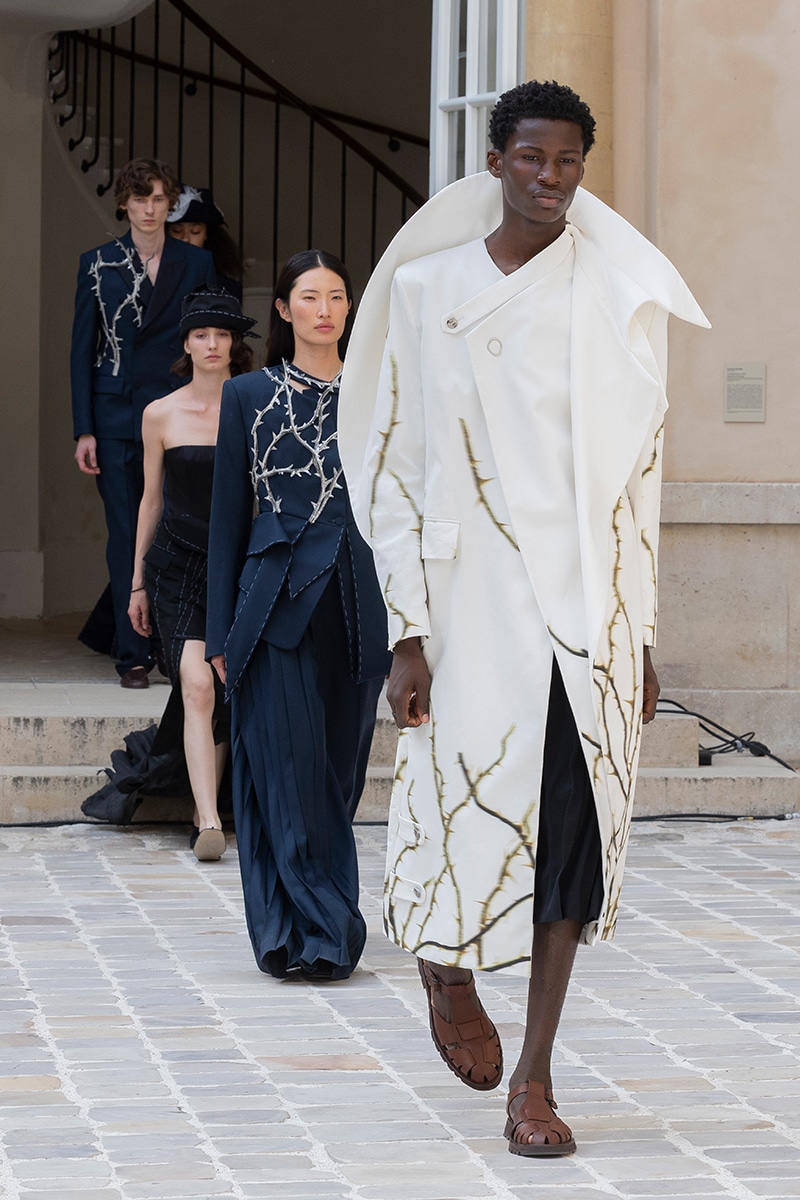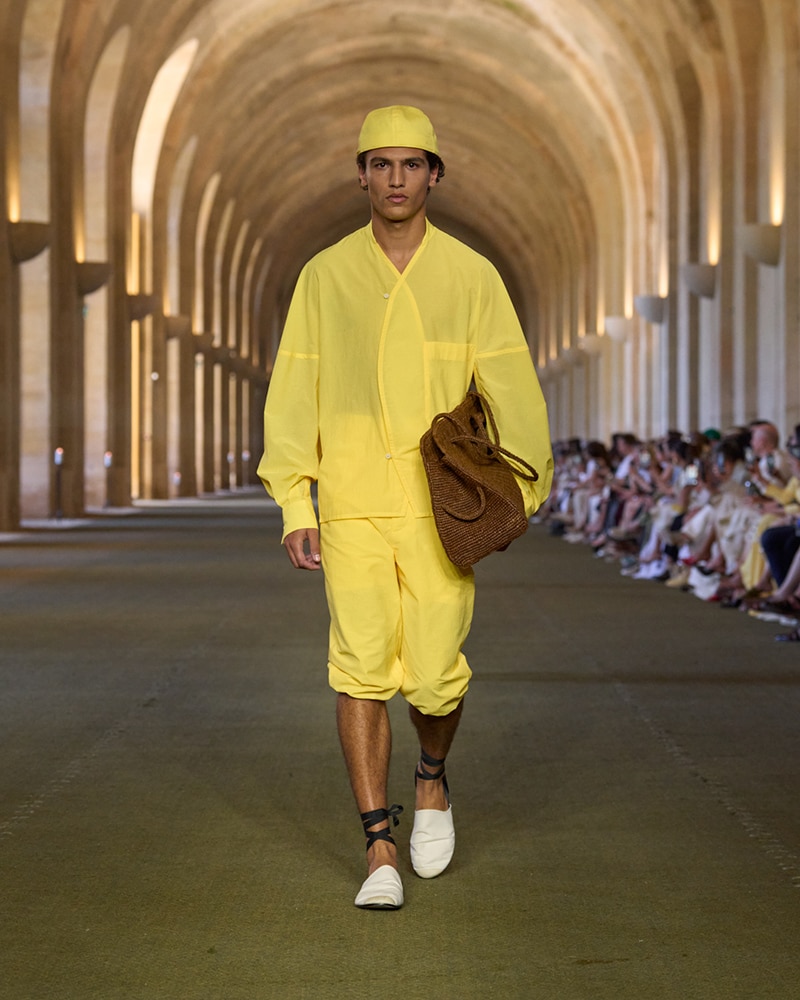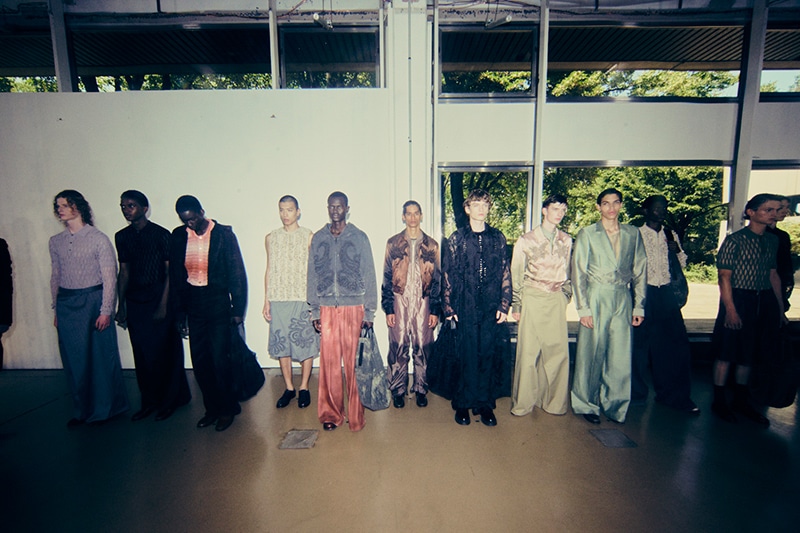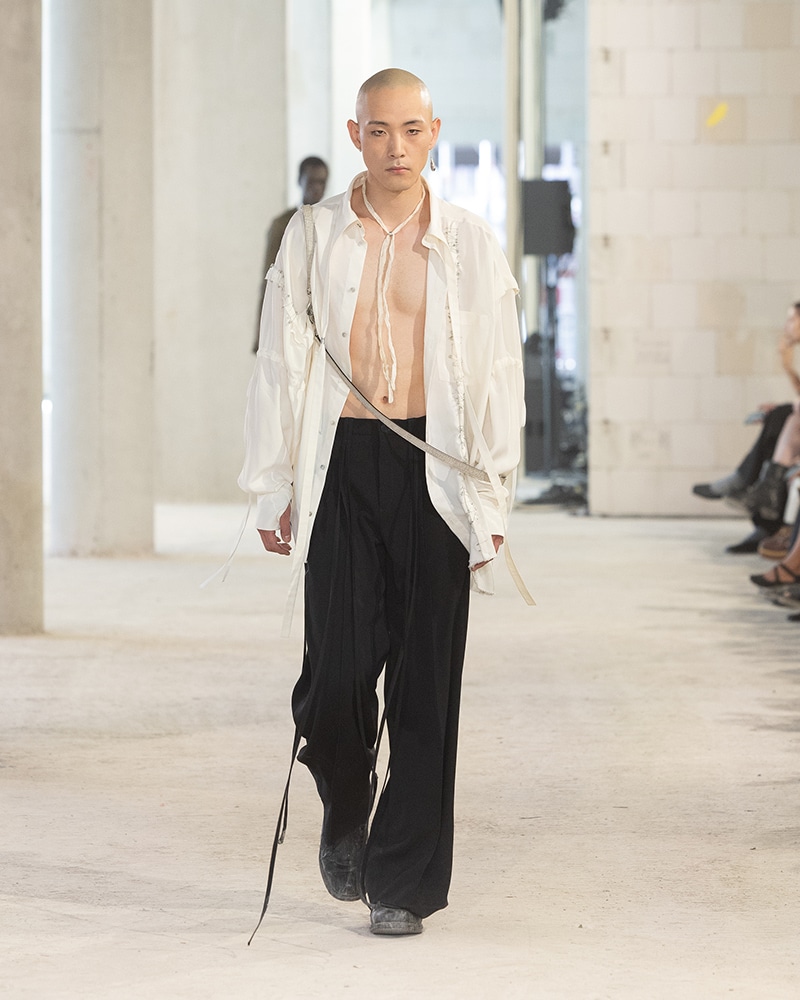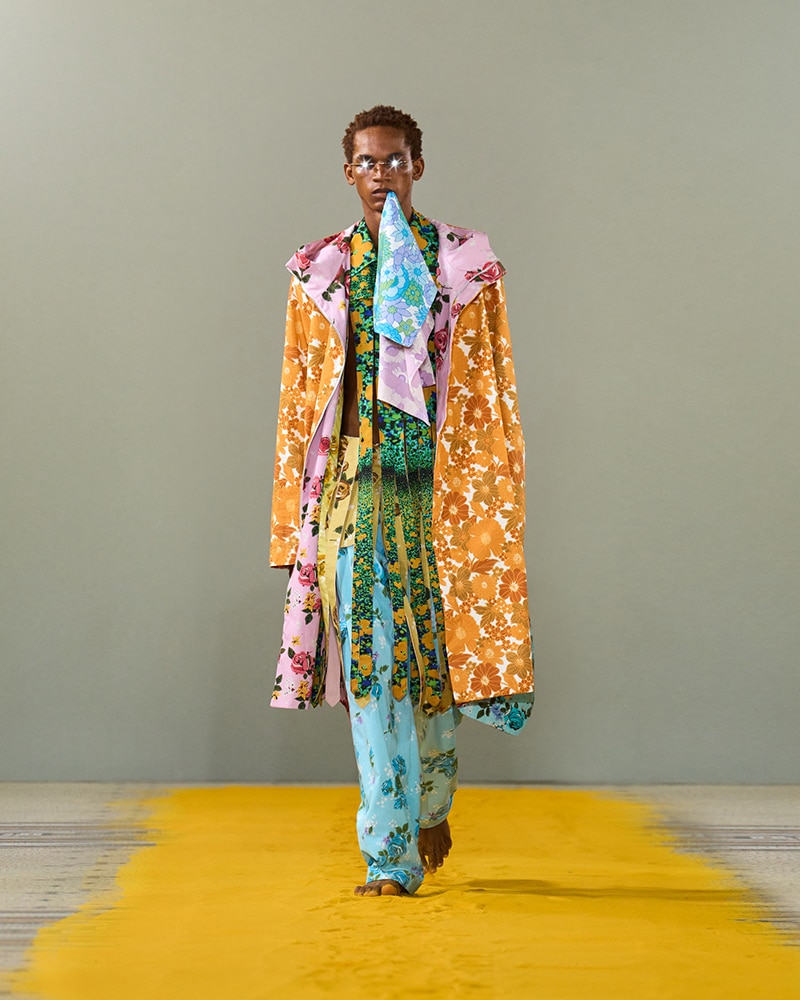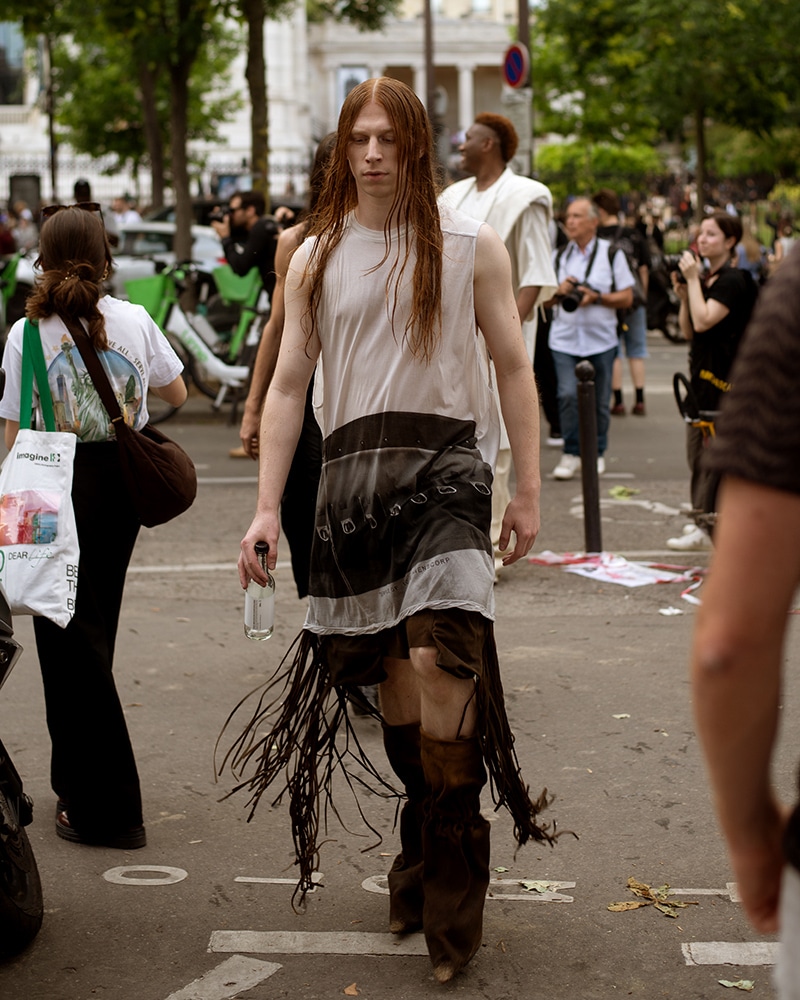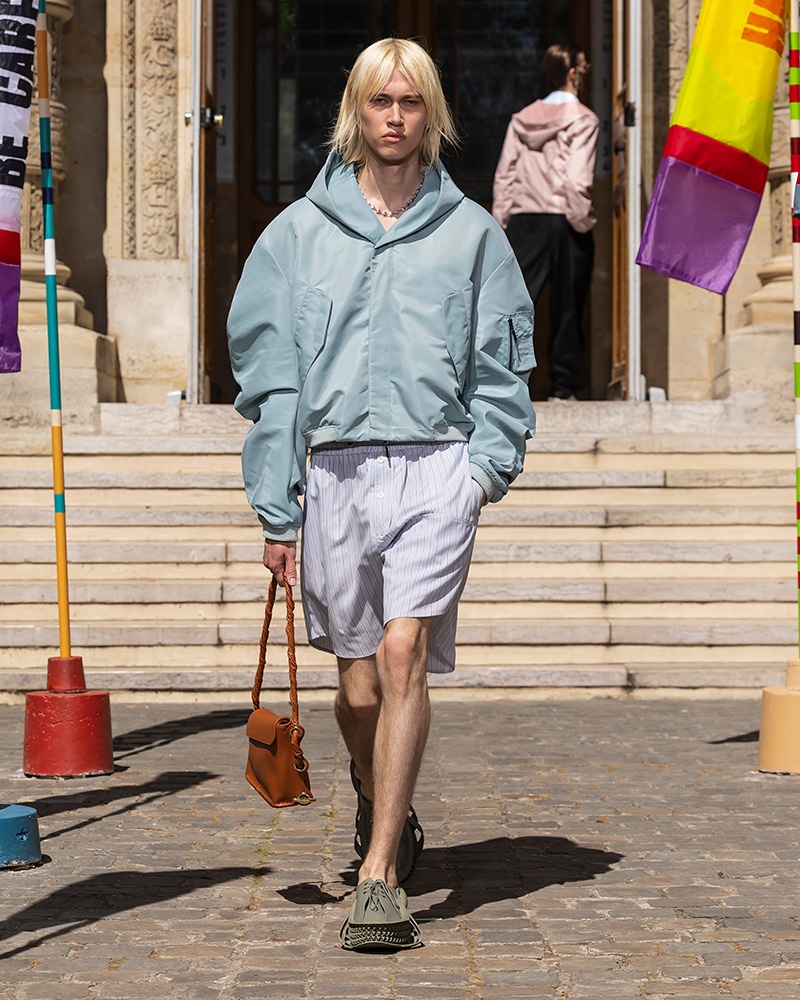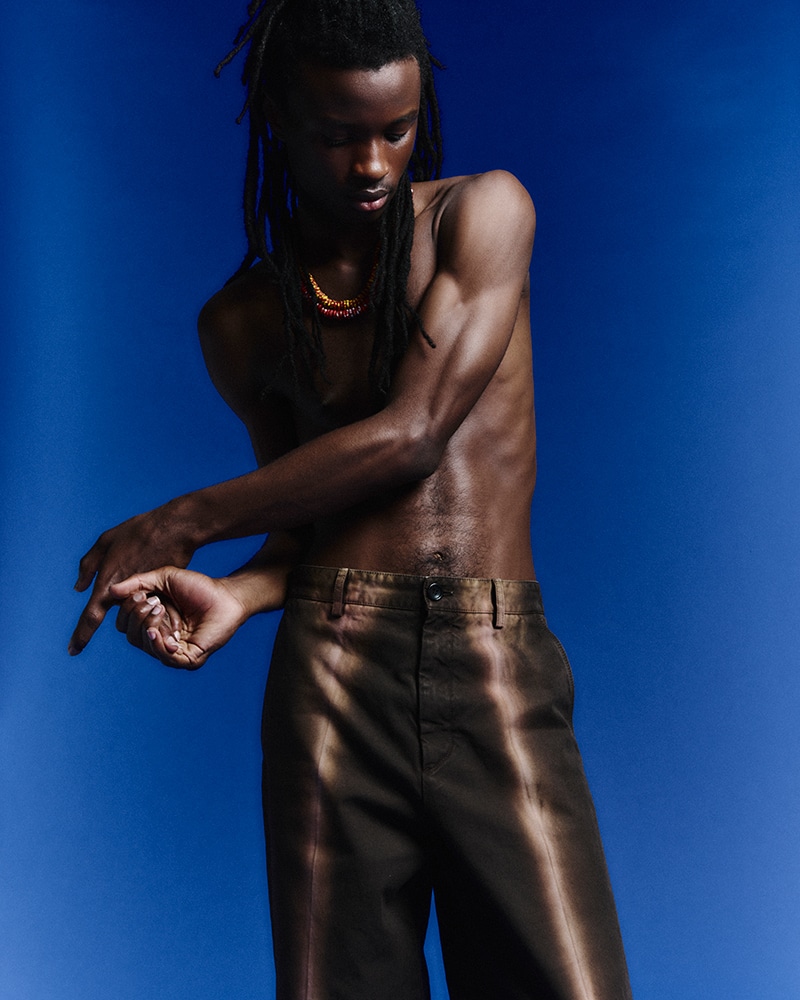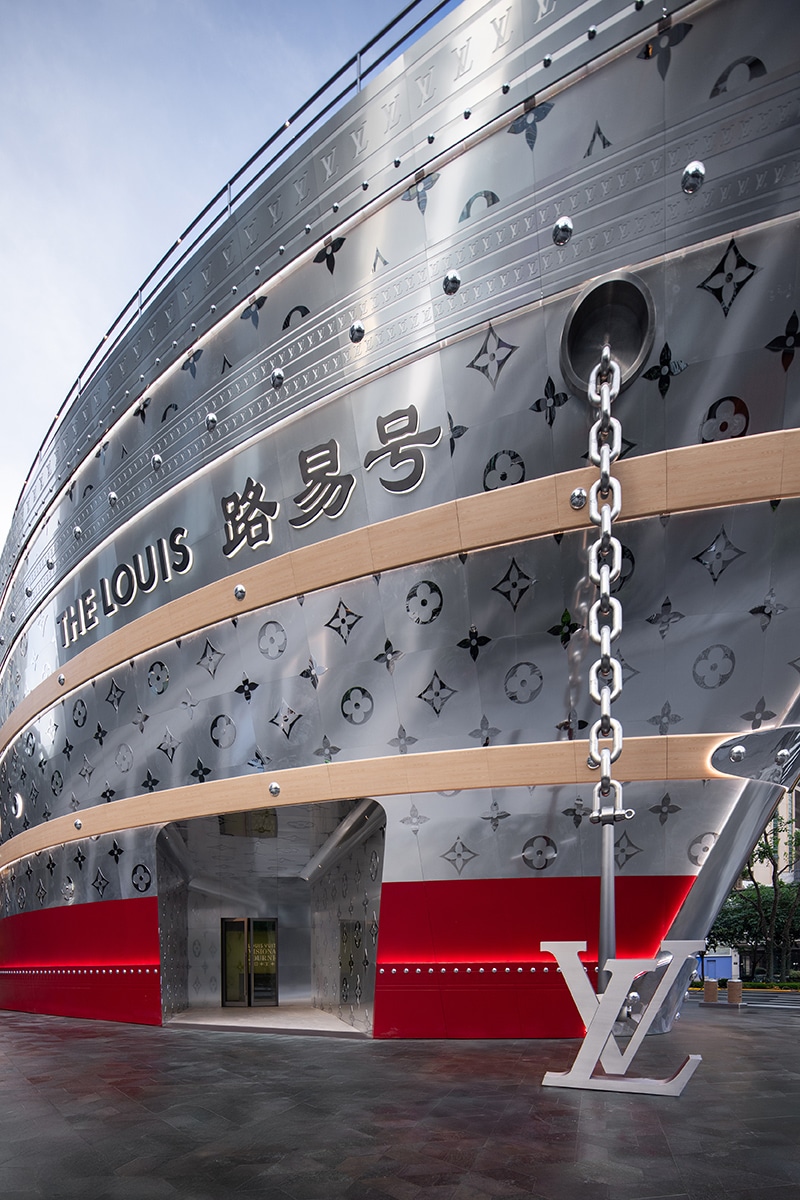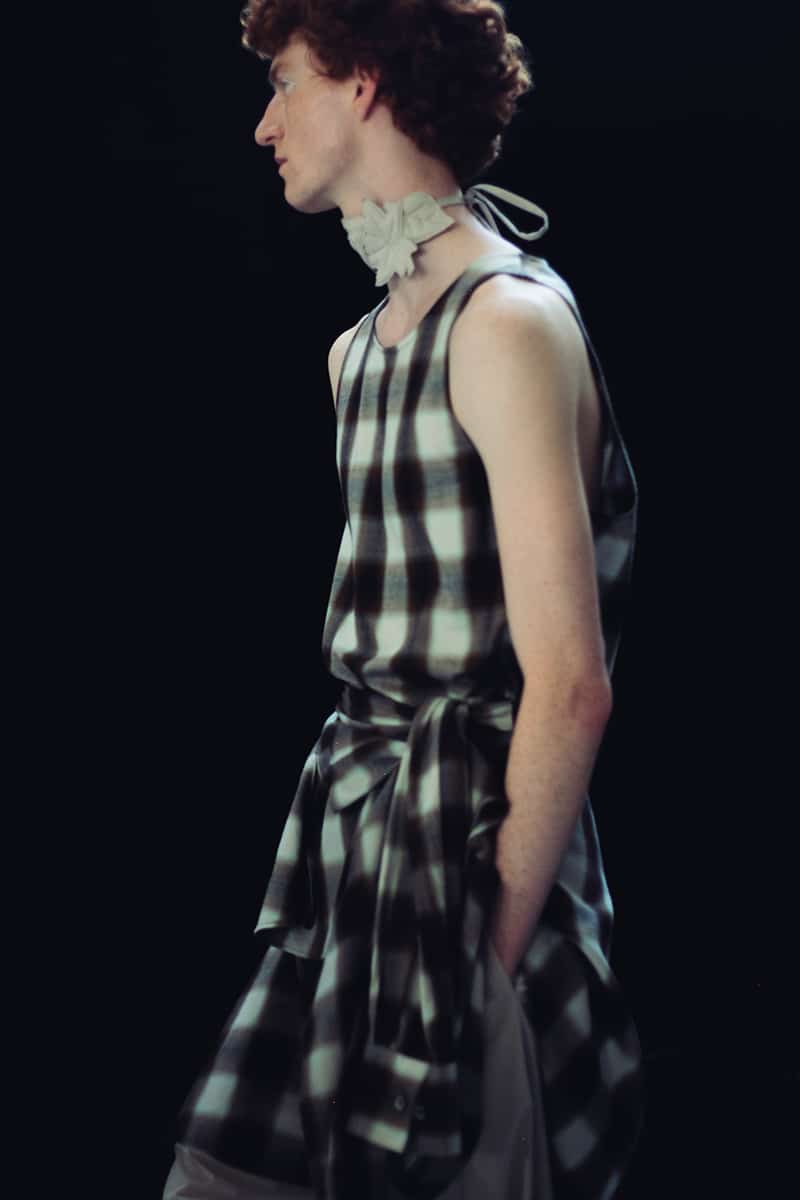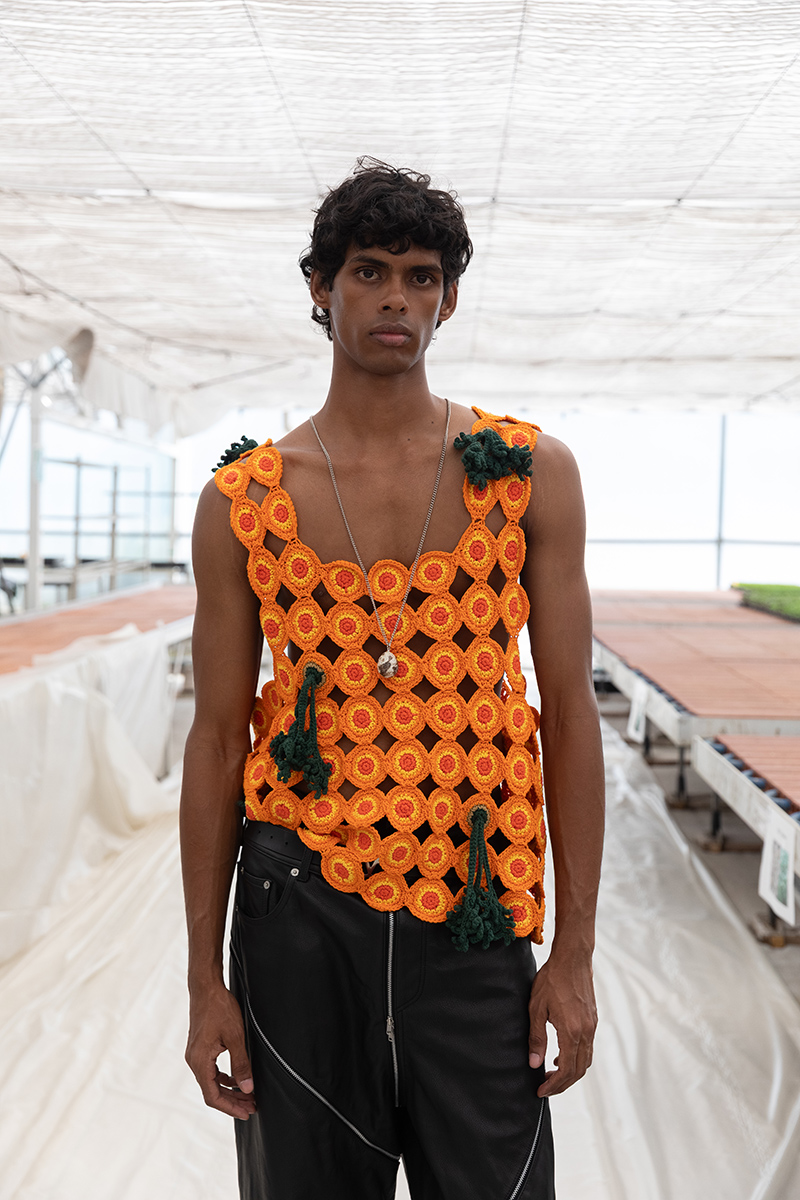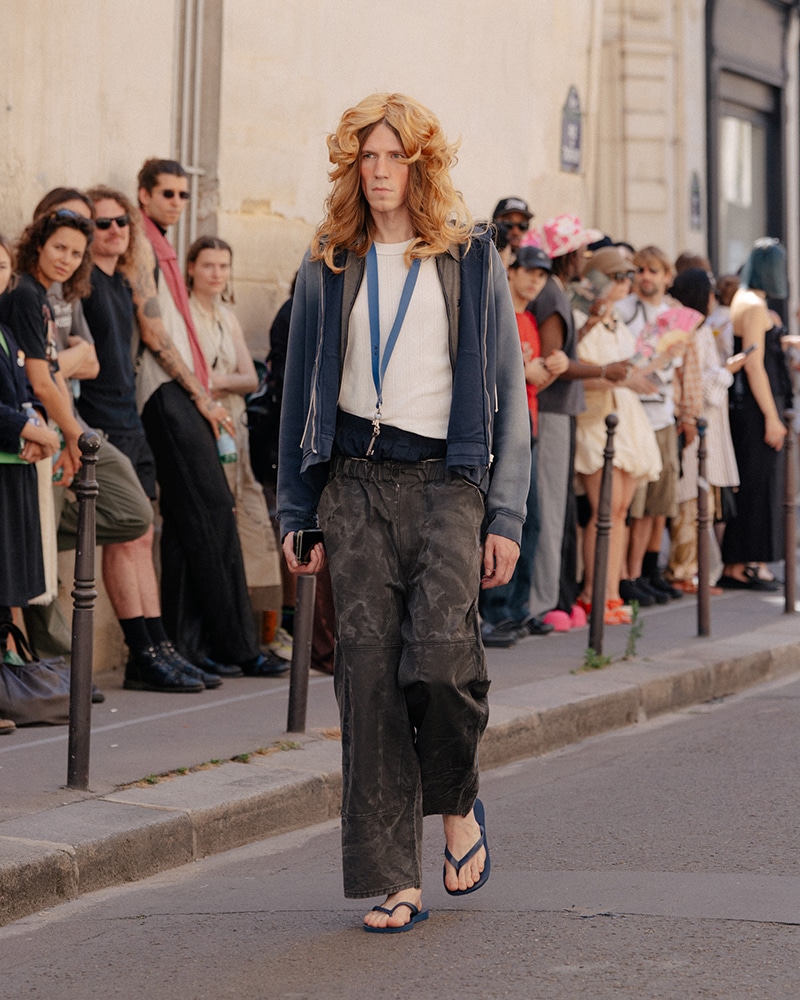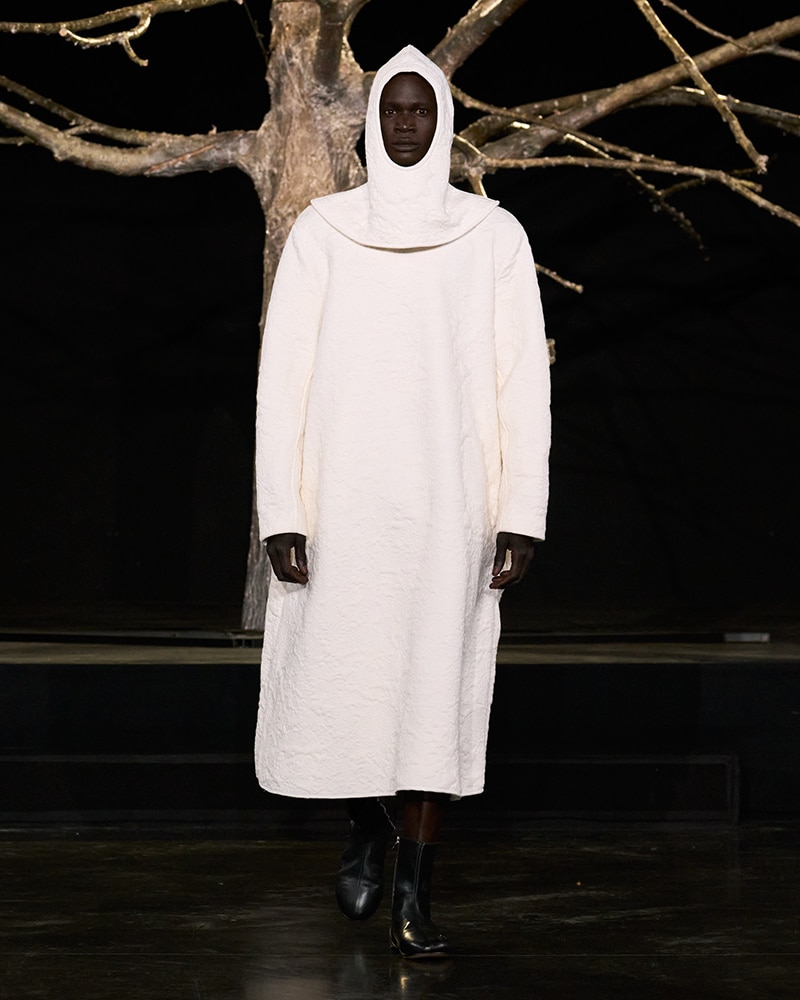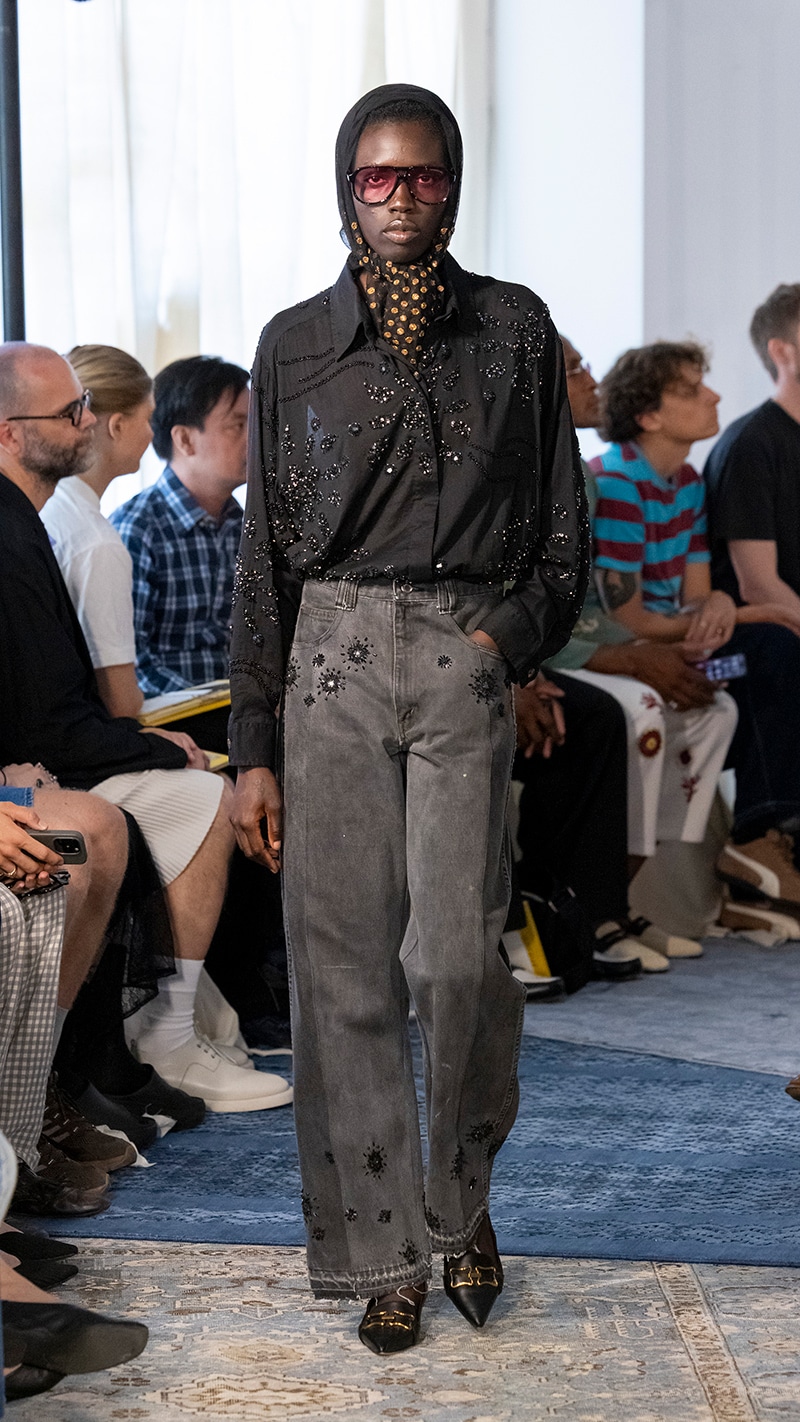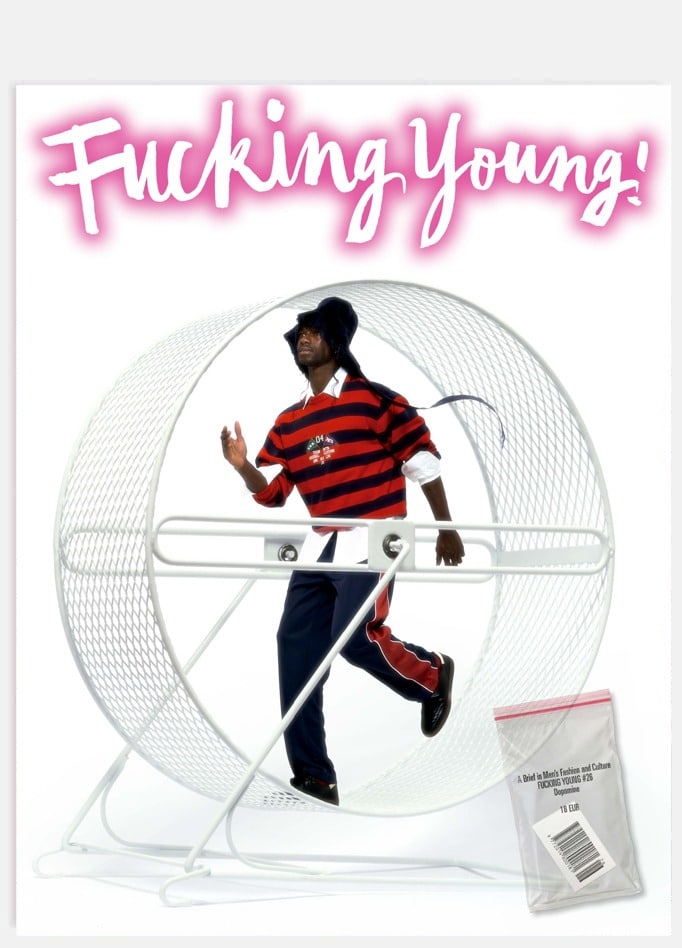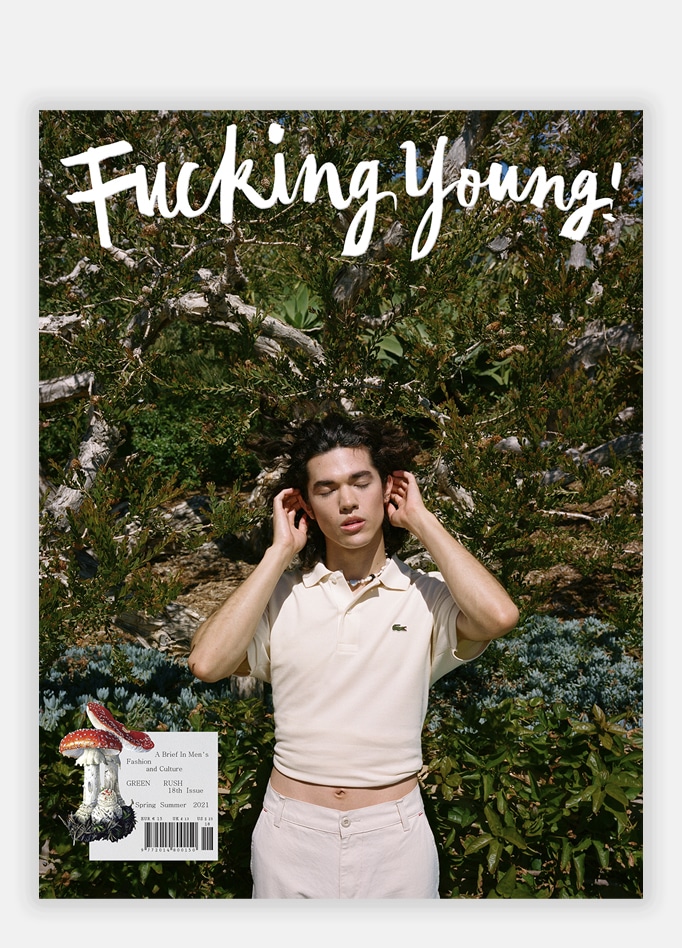William Richard Green Fall/Winter 2012
by Adriano Batista
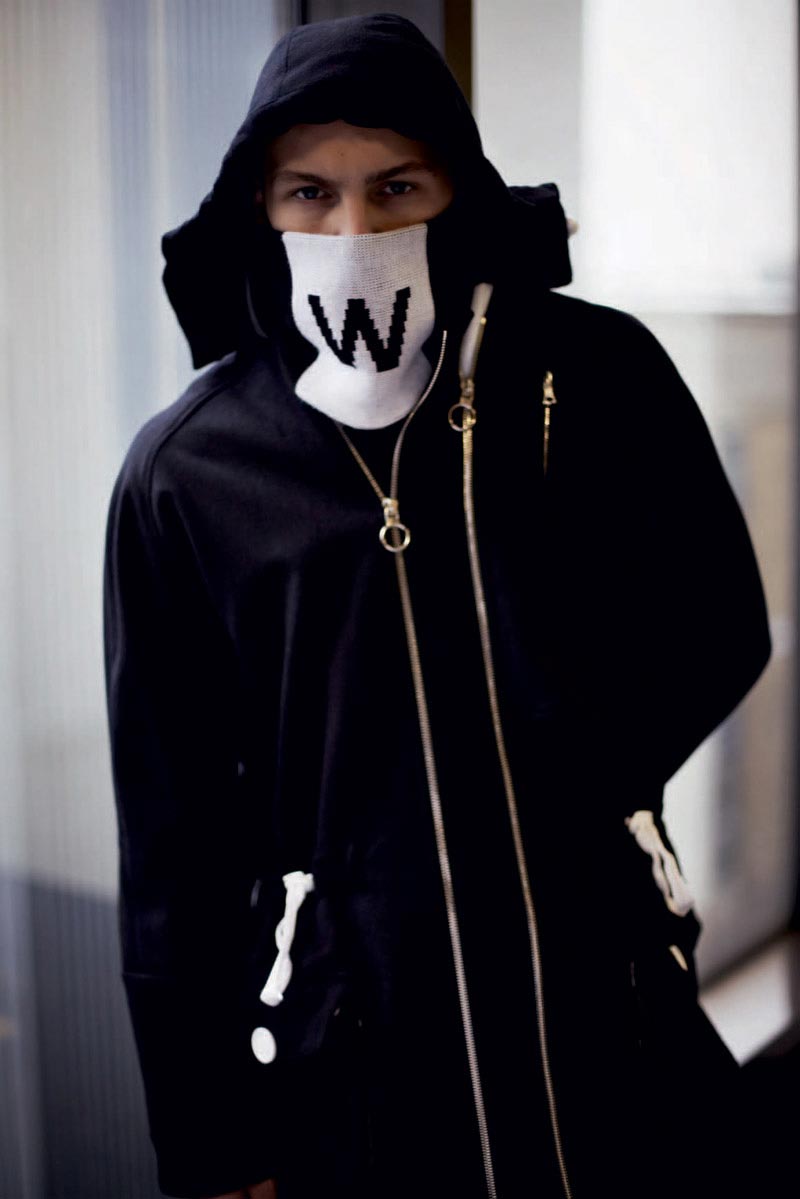
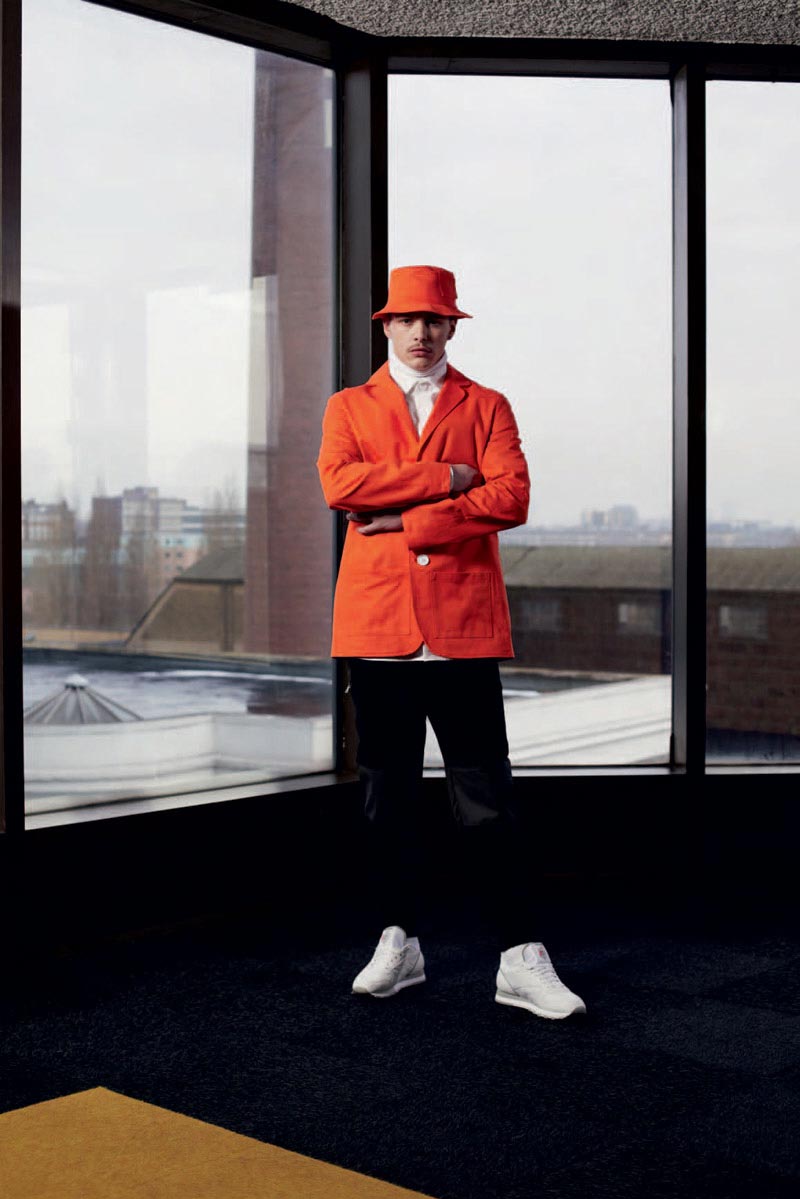
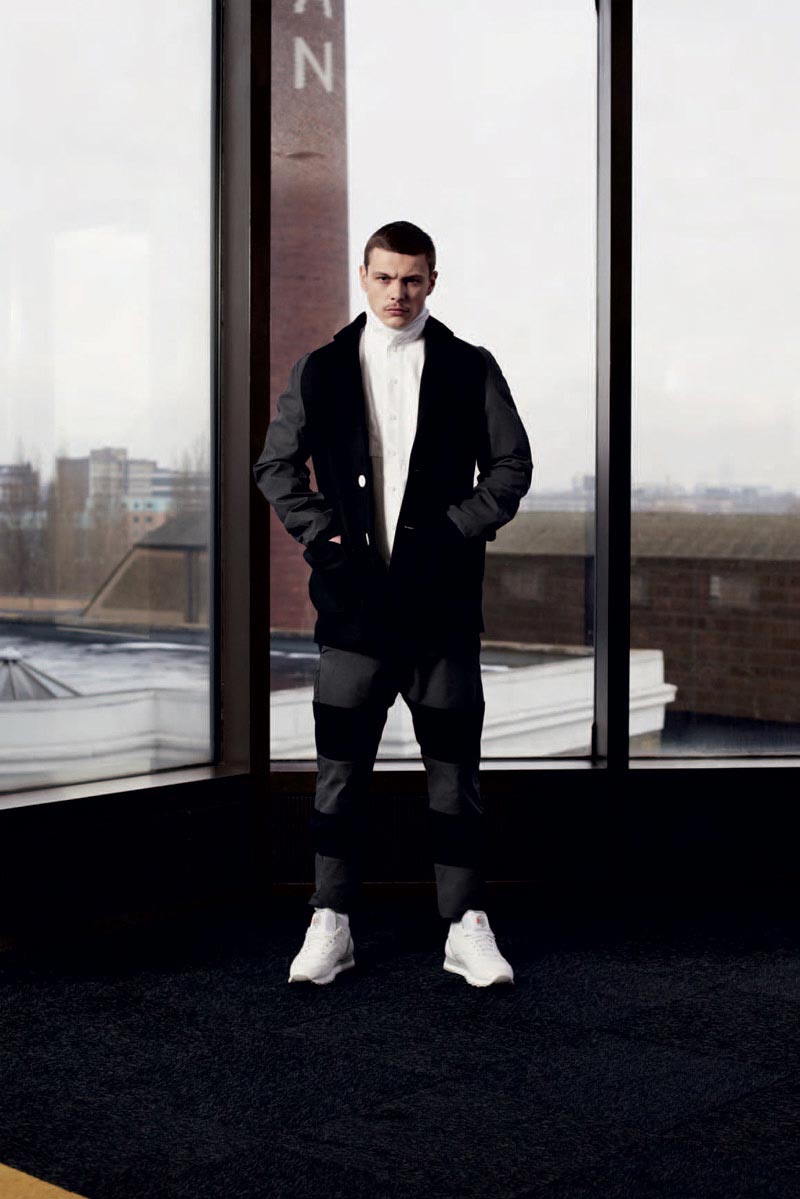
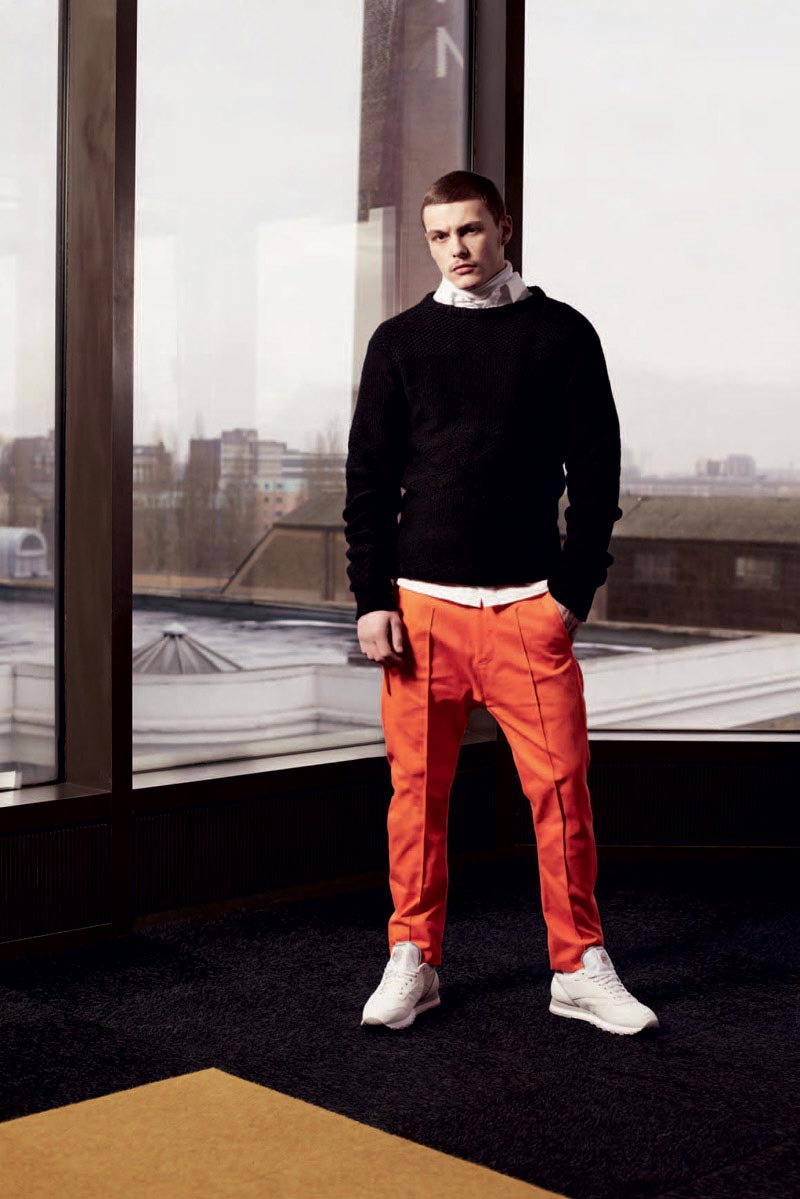
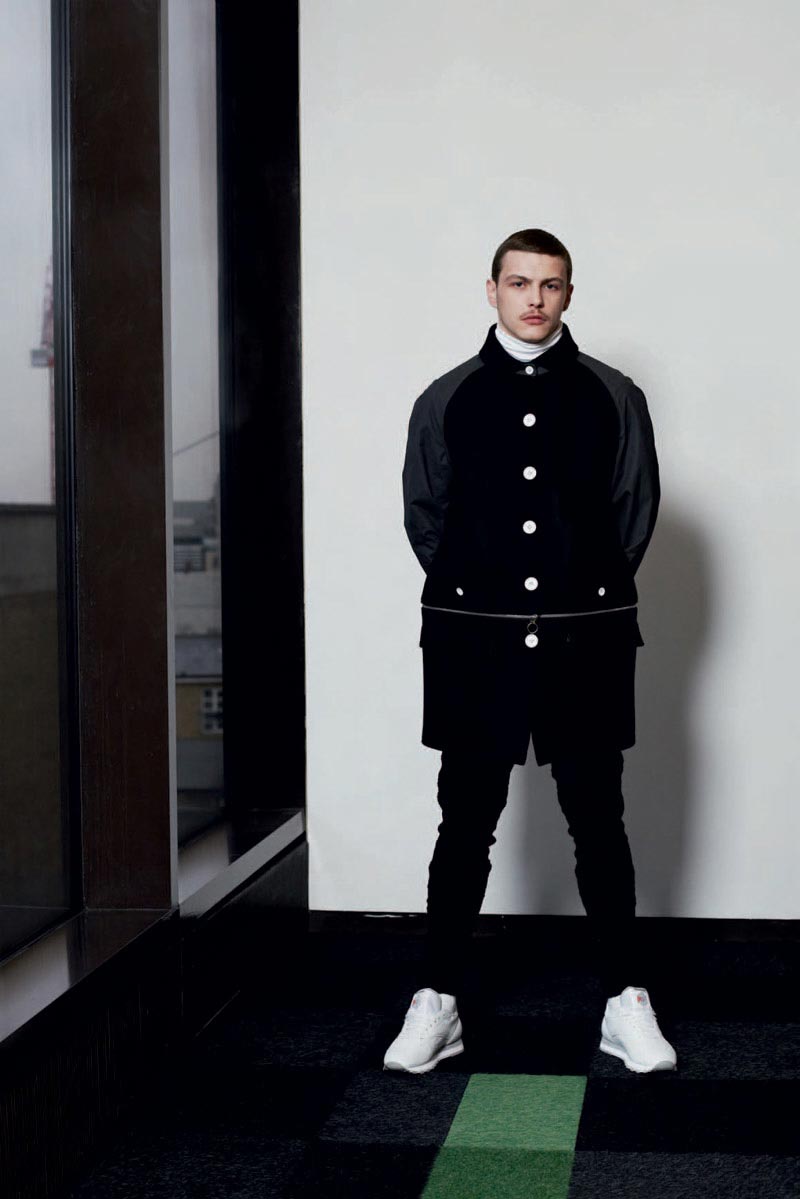
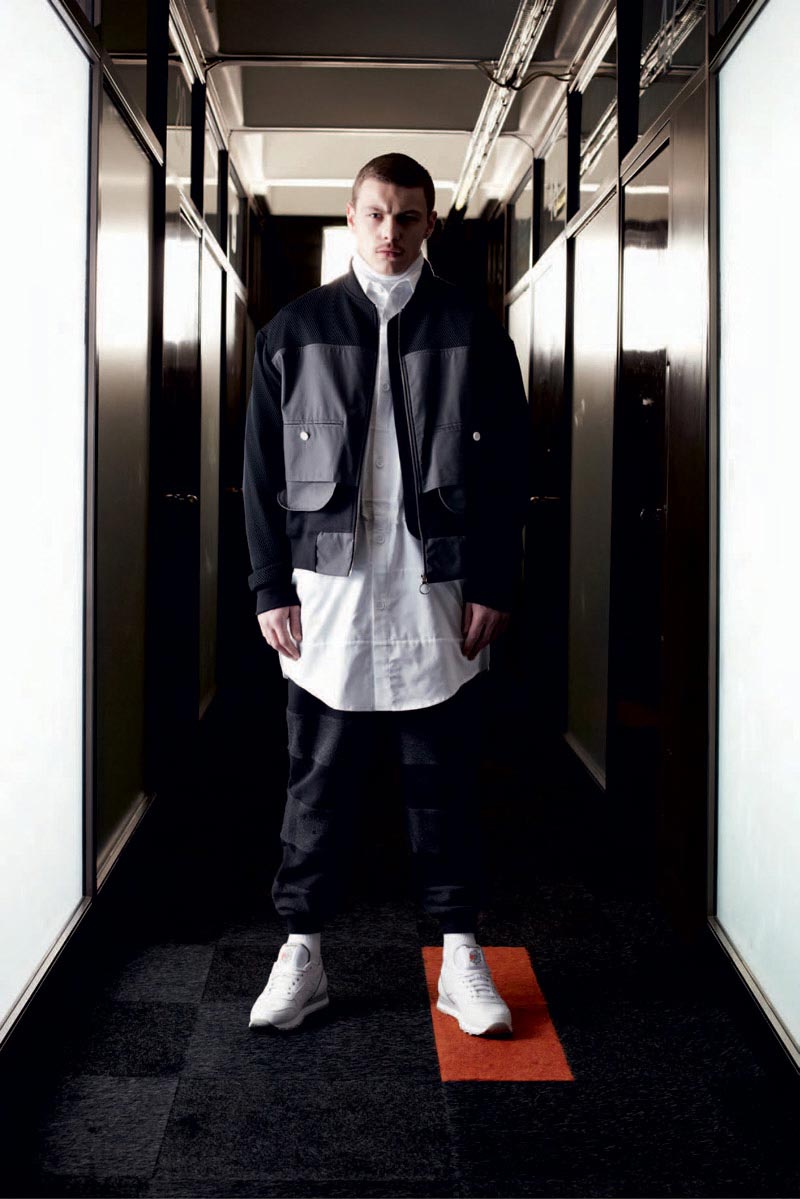
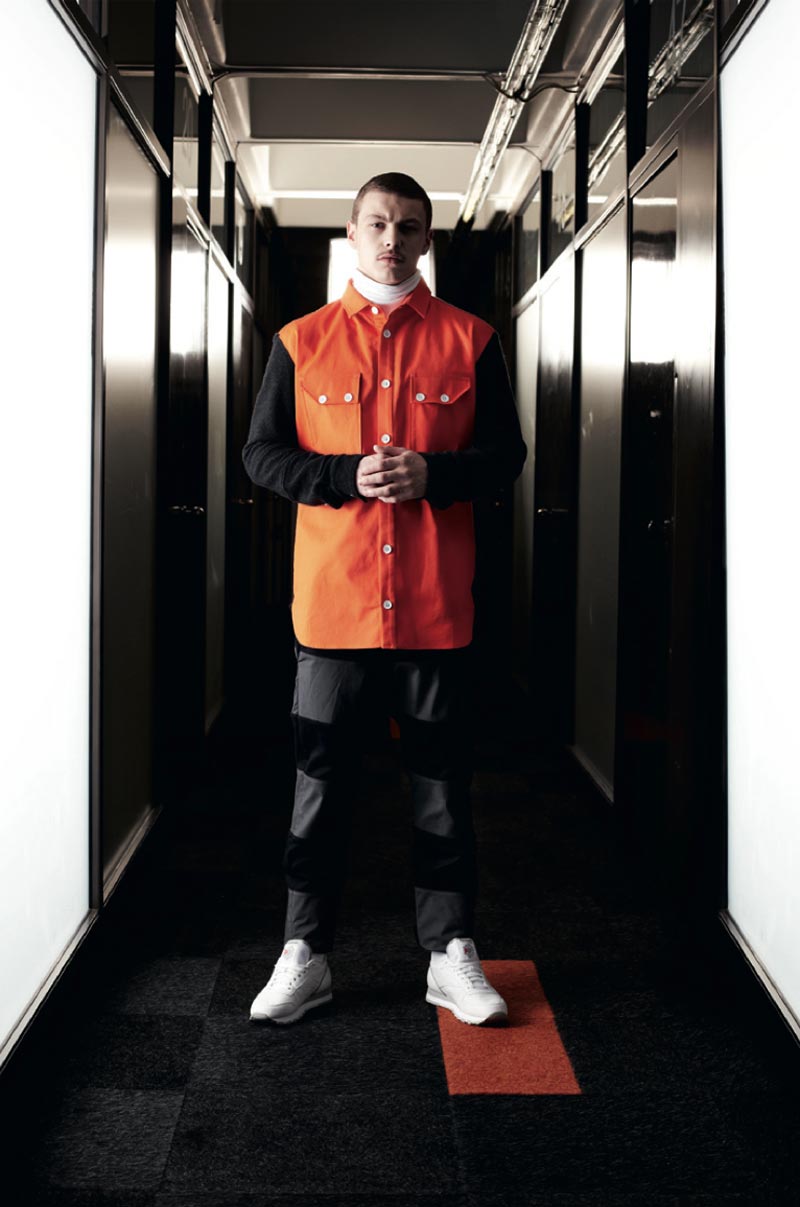
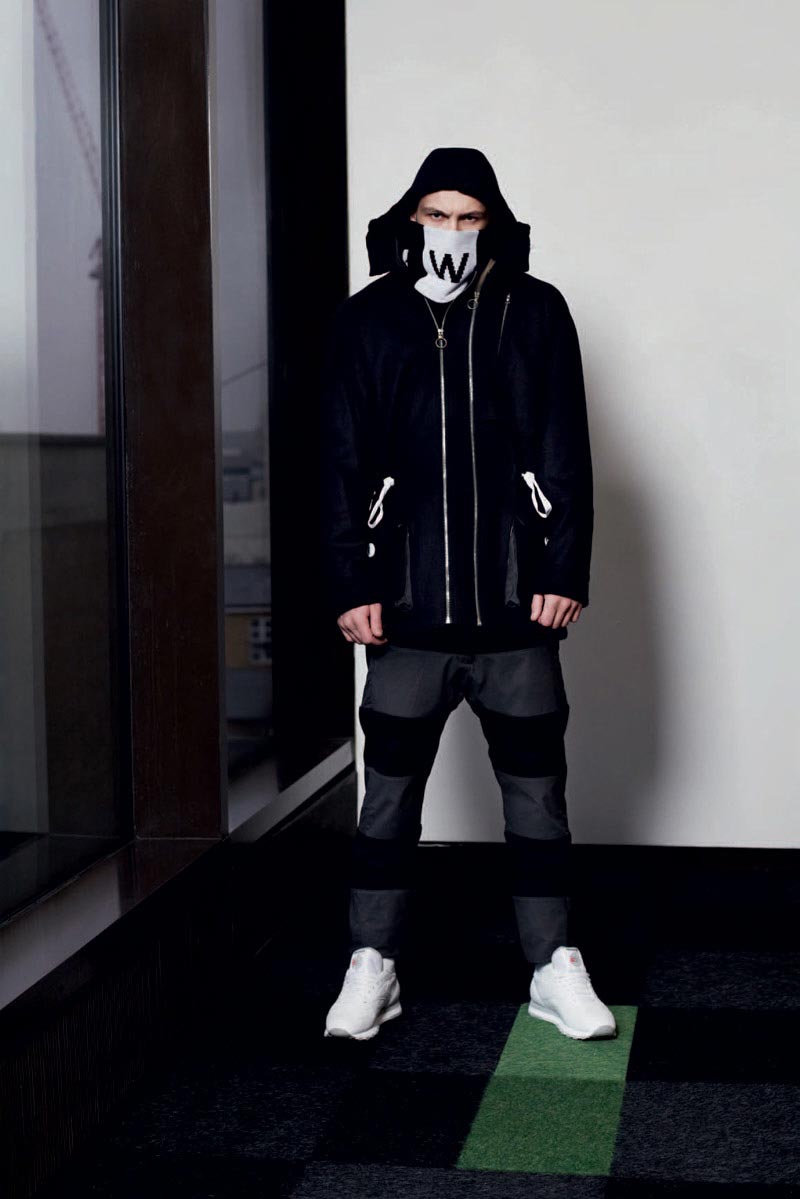
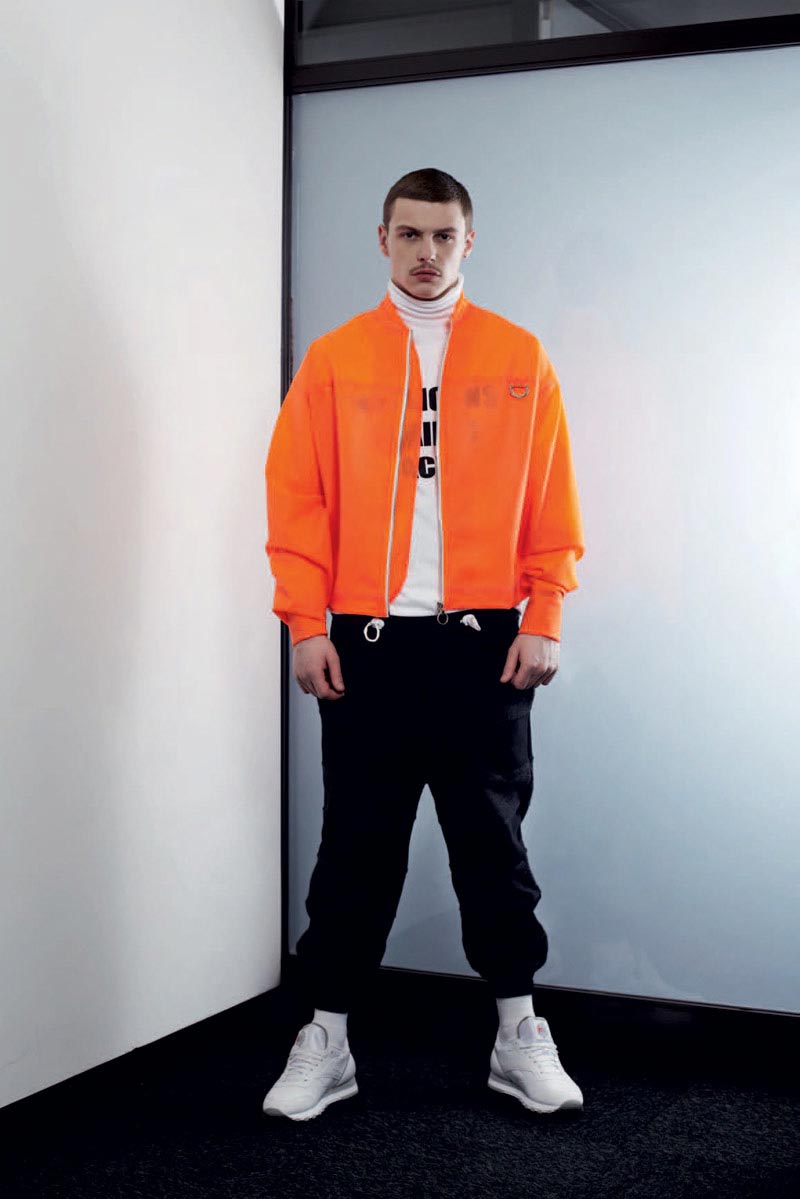

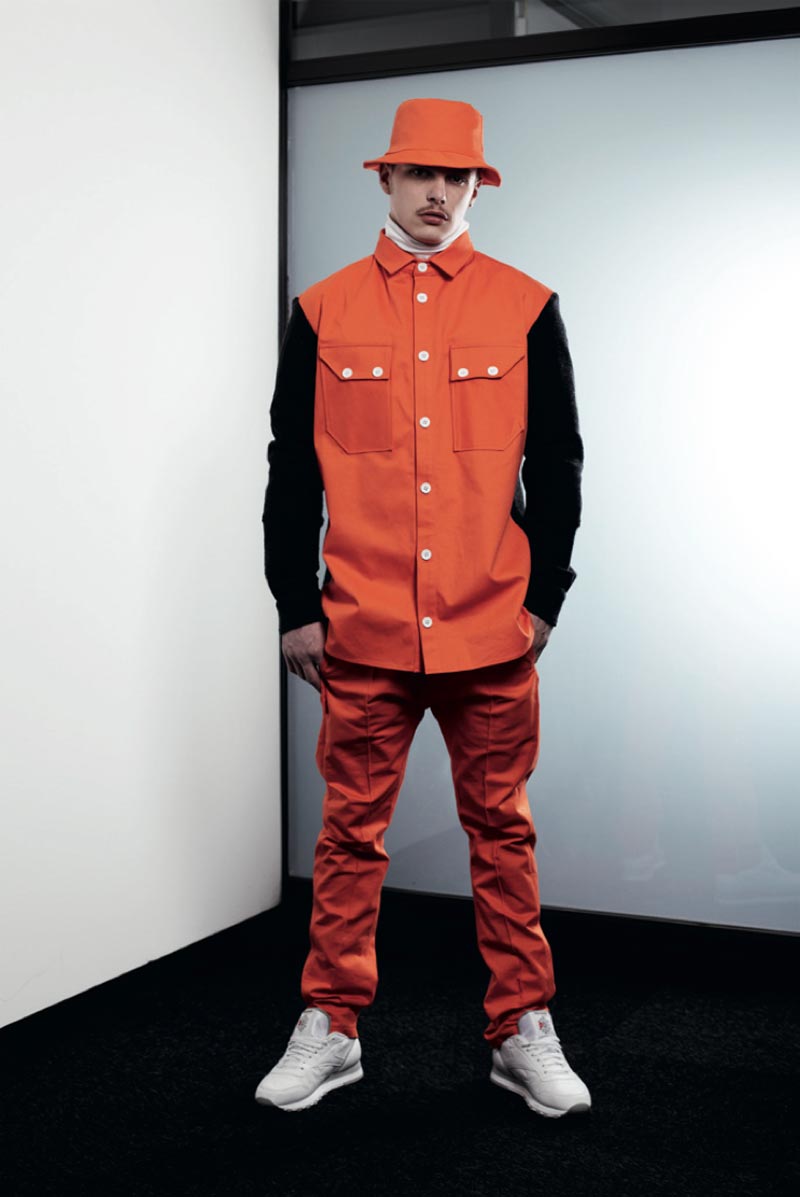

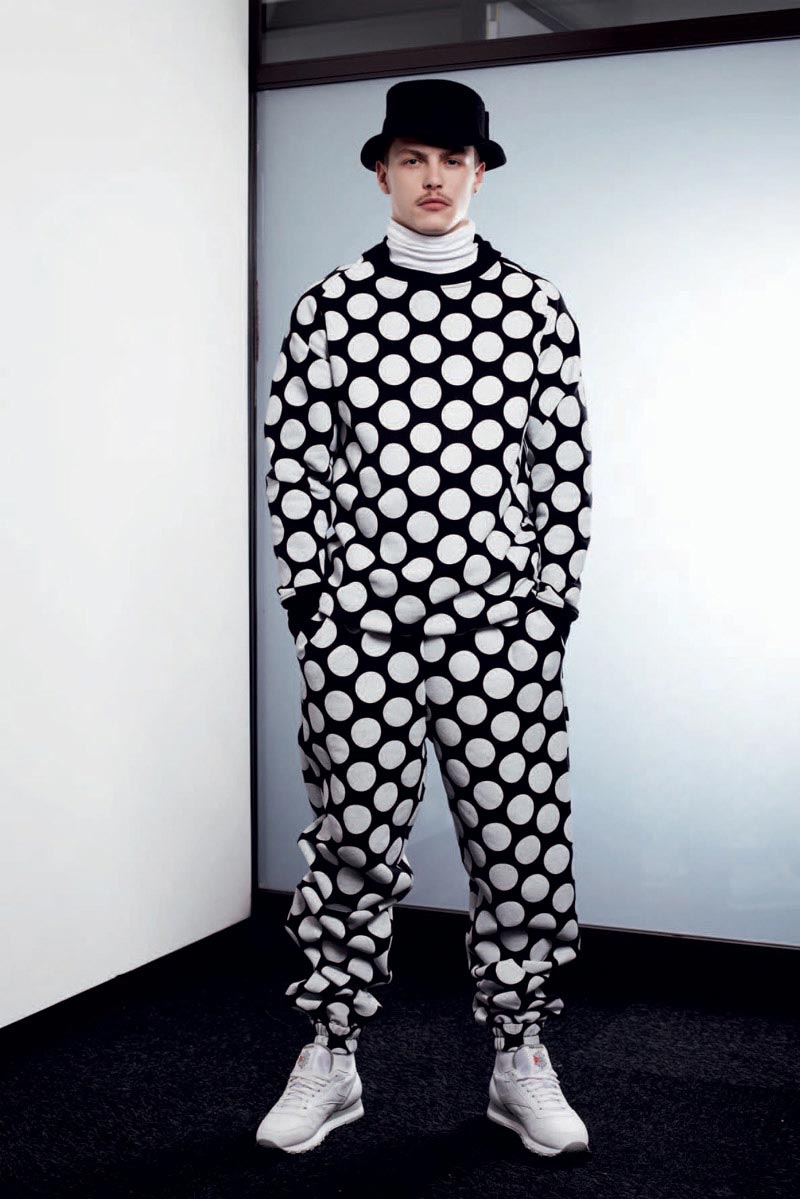
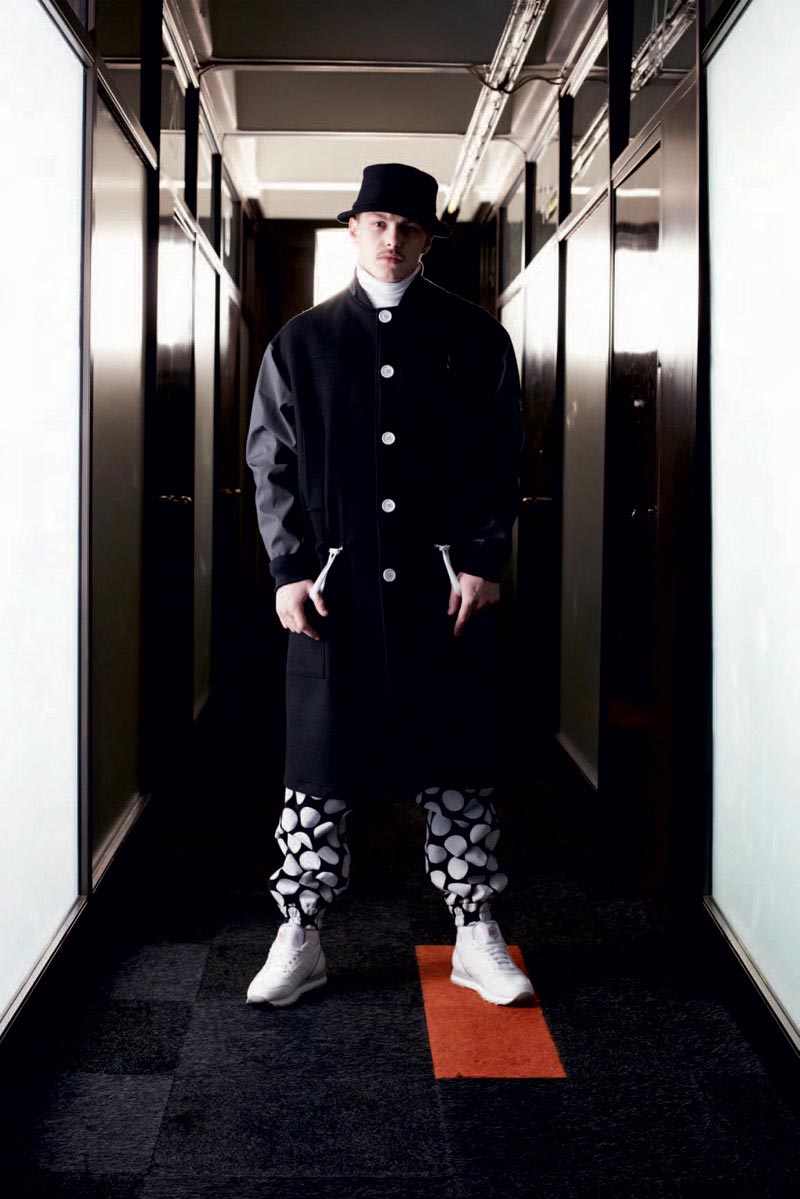
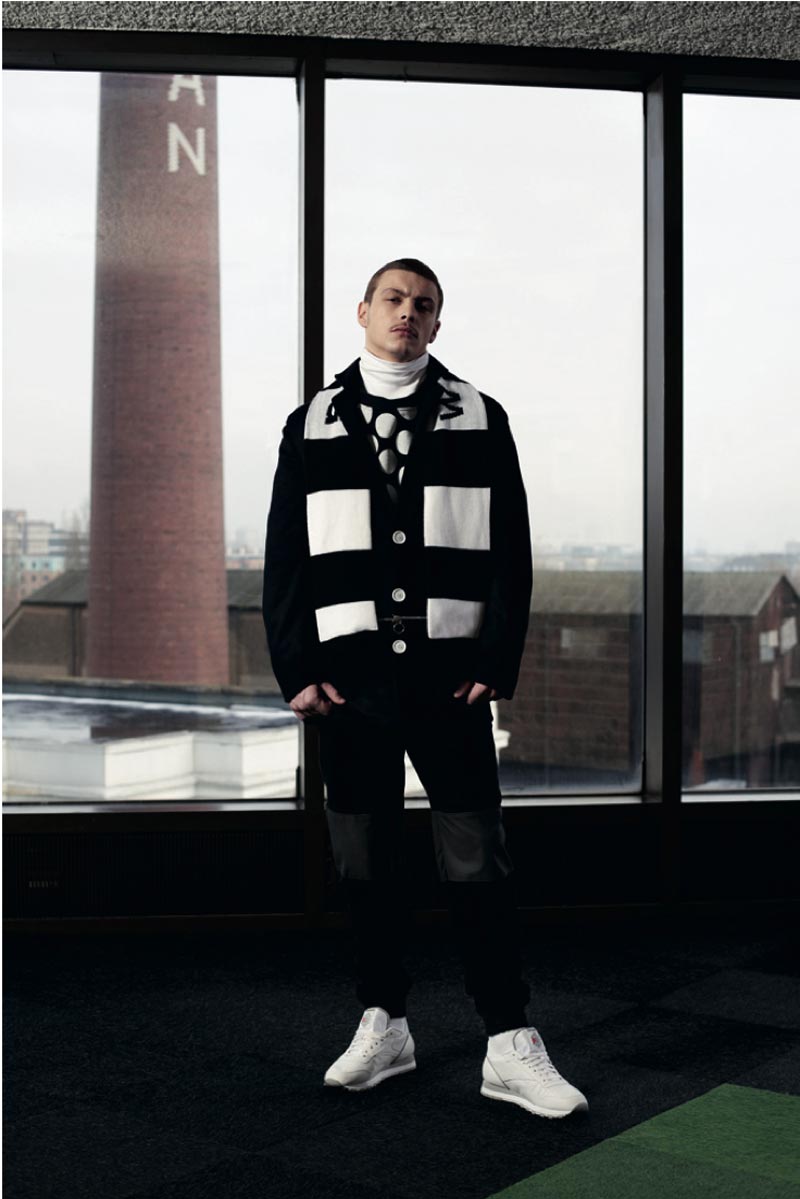
For Fall/Winter 2012, William Richard Green tackles the subject of Britishness, a notion that lies at the core of his universe. In a collection titled ‘Hooligans Against Acid’, Green draws on the 1989 arrival of the rave scene in England, referred to as ‘The Second Summer of Love’. Replacing the violent pastimes of football hooligans with Ecstasy-induced raves, it was a revolution that paved the way for the modern British youth culture, which rules the generation to which Green belongs.
As one of the designers headlining a new era in British menswear, Green fuses his British influences with a willingness to support the manufacturers and suppliers of England. With wools milled in York- shire and cotton drill from the same area used next to Jersey knitted in Leicestershire, wax cotton from Lancashire, shirting from Cumbria, and knitwear in Shetland wool, Green has created a collection, which – bar zips – is British inside and out.
The outdoorsy, boyish air, which acts as a backdrop to the William Richard Green signature, plays host to elements from sportswear and utility dress that appears throughout the collection. Performance pieces such as a grey wax cotton bomber or cashmere trousers with waxed kneepads unite the ward- robes of the terrace and the rave, not unlike the combination of navy, black, grey and orange in the colour palette.
A blend of the two worlds is further manifested in the use of drawstrings, zips and double collars, which run through out the collection. A sense of functionality is introduced in a transformable Melton wool coat with hidden detachable mittens, a storm flap, waxed raglan sleeves, and a waist zip, which unzips the coat into a cropped jacket, revealing pocket details.
William Richard Green is always concerned with a British craftsmanship, masculinity, precision detail and comfort but still looks fucking cool.
“In the final days of the yuppie decade, the summer of ’89 saw a new type of youth rebellion rip through the cultural landscape, with thousands of young people dancing at illegal Acid House parties in fields and aircraft hangars around the M25. Set against the backdrop of ten years of Thatcherism, it was a benign form of revolution, dubbed the Second Summer of Love – all the ravers wanted was the freedom to party… The rave scene, along with the drug Ecstasy, broke down social barriers and even football hooligans were ‘loved up’, solving a problem the government had never managed to crack.”
Taken From BBC documentary ‘Summer of Rave’ 1989, 2006.
Hayley Louisa Brown for GRIT Magazine
Jake Shortall & Tiago Pinheiro by Jolijn Snijders
For Spring/Summer 2026, David Koma presented I LOVE DAVID at Berlin Fashion Week, a menswear collection that balances humor with depth.
SLⱯY, unveiled during Berlin Fashion Week, takes the ancient tale of Saint George and the Dragon and flips it into a meditation on modern battles.
Change isn’t always about moving forward, but sometimes, it’s about holding on. For their Spring/Summer 2026 collection, Milieuschutz, Richert Beil explores exactly that tension.
Inspired by the hidden love stories of novels like Maurice, Swimming in the Dark, and Young Mungo, the collection moves through three emotional stages of queer coming-of-age: concealment, self-acceptance, and the bittersweet weight of memory.
Through its new CGI campaign, “Beyond Real, Beyond Now,” and a community-driven approach, REVERSIBLE is bridging the gap between inspiration and accessibility.
Eugenio Elverdin photographed by Lucas Ricci and styled by Gaston Olmos, in exclusive for Fucking Young! Online.
There’s a particular kind of freedom that comes with movement, and AMBUSH’s Spring/Summer 2026 collection, “Tribe on the Move,” captures that feeling.
Louis Vuitton’s latest travel campaign takes viewers on a visual journey through China, reimagining travel as an experience rather than just a destination.
Paris Fashion Week witnessed Steven Passaro’s Moonlit Lover Spring/Summer 2026 collection, an exemplar of the aftermath of love encountered after midnight and gone before sunrise.
Because home should never be denied to anyone. In a world where home shouldn’t be a privilege but a right, artist and activist Charlie Smits is stepping up. Smits has teamed up with Fundación… »
Simon Porte Jacquemus has fulfilled his dream, and in the process, he continues to invite us to dream with him.
We checked in with Takuya Morikawa to talk process, evolution, and the foundation in the essence of creation.
Berlin Fashion Week saw the return of Milk of Lime, fresh off their Berlin Contemporary win, with their Spring/Summer 2026 collection, CHIME.
Craig Green’s Spring/Summer 2026 collection feels like a half-remembered dream with shapes you recognize, but shifted just enough to make you look twice.
Photographer Denzil Jacobs presents a selection of eclectic looks photographed on the streets of Paris during Men’s Paris Fashion Week, outside Amiri, Rick Owens, 3.Paradis, Kidsuper and more, exclusively for Fucking Young!
Ikko Ohira photographed by Luis May and styled by Timothée Geny La Rocca, in exclusive for Fucking Young! Online.
At Paris Men’s Fashion Week, NAMESAKE’s Spring/Summer 2026 collection, INNERCHILD, didn’t just show clothes but also memories.
Designer Andrea Pompilio maps a wardrobe for modern nomads, one that looks collected rather than curated.
Louis Vuitton has always been about journeys, both literal and imaginative.
VIKTORANISIMOV chose an unlikely stage for its first Berlin Fashion Week presentation: a former telecommunications bunker, now The Feuerle Collection museum.
After the show, designer Feng Chen Wang caught up with us, to open up about the emotion behind this collection, and the brand’s evolving identity – accompanied by backstage moments captured by Leiya Wang.
Take a look at DOUBLET’s Spring/Summer 2026 backstage, captured by the lens of Rita Castel-Branco during Paris Fashion Week, in exclusive for Fucking Young!
Take a look at KIDSUPER’s Spring/Summer 2026 backstage, captured by the lens of Tiago Pestana during Paris Fashion Week, in exclusive for Fucking Young!
For Camiel Fortgens’ SS26, models walked the actual streets of Paris during Fashion Week, portable speakers in hand, each playing a fragment of the show’s soundtrack.
Singer-songwriter HUMBE is Mexico’s breakout pop star, leading us into a new era of sentimental pop.
Created with artist Samuel de Sabóia, the lineup weaves together regeneration, spirituality, and a question: What does the future of fashion look like?
ZIGGY CHEN’s PRITRIKE doesn’t shout. It hums like the low, steady pulse of rain on summer earth.
For their SS26 show, the adidas and Yohji Yamamoto collaboration traded the standard runway for something more visceral: a four-act performance directed by choreographer Kiani Del Valle.
After showing off-calendar for two seasons in a presentation format, the 2023 LVMH Prize-nominated designer Kartik Kumra is now the first Indian designer to be on the official menswear calendar.
SANKUANZ’s Spring/Summer 2026 collection finds its heartbeat in Tara, the Tibetan Buddhist goddess who exists between two worlds, both enlightened and earthly.


















